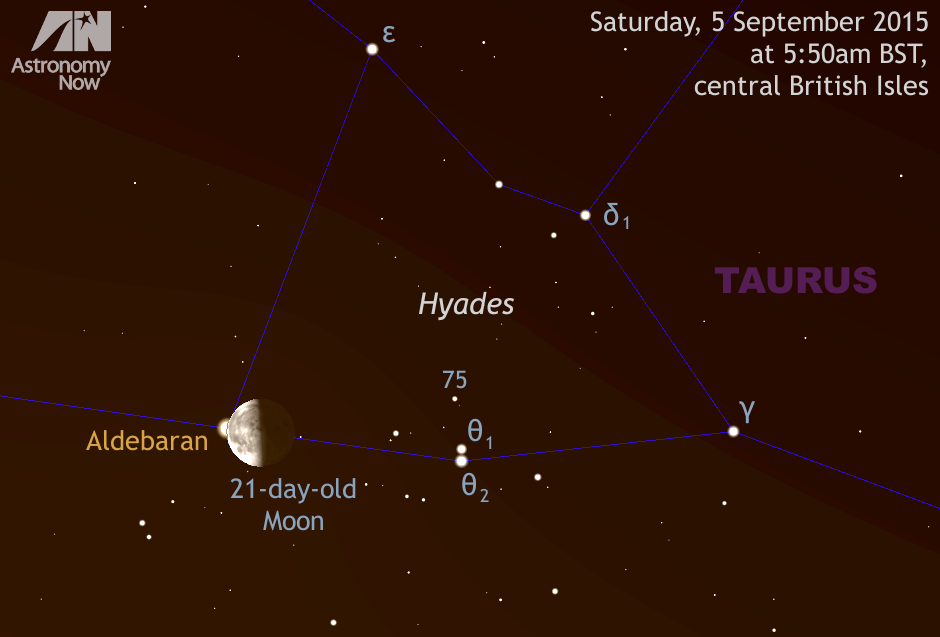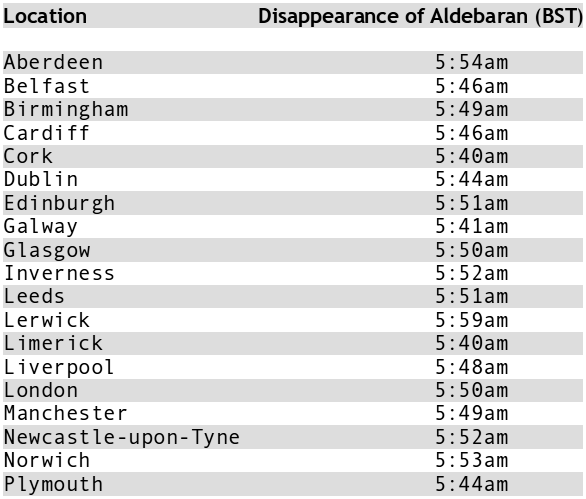
This is actually the Moon’s third close encounter with first-magnitude star Aldebaran this year as seen from the UK. The first two — on 26 February and 21 April, respectively — were grazing lunar occultations, where the star appeared to brush by the jagged southern limb of the Moon as seen from the northern tip of Scotland. In contrast, this Saturday morning’s event is a full occultation, where Aldebaran will disappear behind the almost last quarter Moon for over an hour for all of the country.
Viewing circumstances and timings
The 5 September occultation disappearance of Aldebaran happens at a time when both the star and Moon are riding high (some 50 degrees altitude) in the south-southeast close to 5:50am BST, which is around the start of civil twilight for the centre of the British Isles, so the sky will be getting light — particularly in the eastern counties.
Given that last quarter Moon occurs later Saturday morning, the waning gibbous lunar disc will approach Aldebaran with the bright hemisphere of the Moon leading. This will mean that binocular observers may have difficulty distinguishing Aldebaran from the bright lunar limb shortly before the instant the occultation takes place, but this will not be a problem for telescope users at a magnification of 50x or more.
If cloud curtails your enjoyment of this Aldebaran occultation, take heart that there are two more visible from the British Isles this year, on the evenings of 29 October and 23 December, respectively.
If you can’t wait that long for your next occultation fix, set your alarm again for the 4:45am disappearance of magnitude +3.6 lambda (λ) Geminorum on 8 September. Clear skies!
Inside the magazine
You can find out more about observing Aldebaran and the Moon in the September edition of Astronomy Now in addition to a full guide to the night sky.
Never miss an issue by subscribing to the UK’s biggest astronomy magazine. Also available for iPad/iPhone and Android devices.




